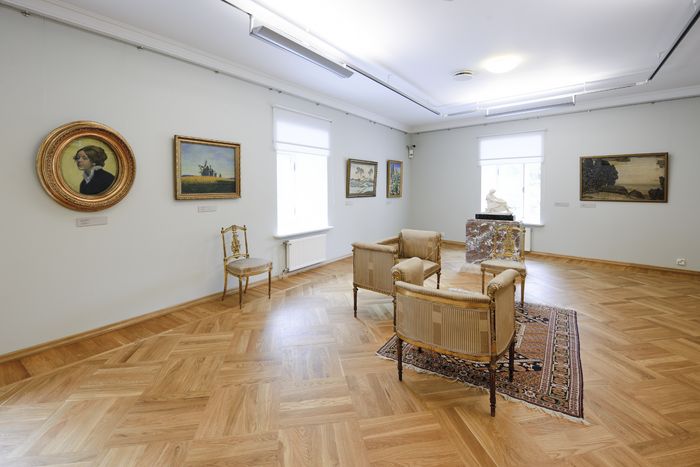
Every Sunday at 10 am the Estonian National Television broadcasts a 5-minute show “NO99 Art School”. To describe the Estonian people’s love for art, the host of the show Eero Epner brought the following example: out of over two thousand people answering Delfi’s question of the day (“How do you spend your free time?”) 38 admitted they visit art exhibitions.
I find the idea to visit an art exhibition guided by the curator a bit strange. Perhaps the reason lies somewhere near the memory of my seventh grade class trips, when we were much more interested in the guide’s eyeglasses that had only one handle left than what was going on around us. But let’s be honest – sometimes the storyteller is more interesting than the story s/he is telling.
At the beginning of November Mikkel Museum organised the so-called Long Wednesdays tours in order to present the museum’s new digital guide and introduce the permanent exhibits.
The digital guides can be borrowed for free and come in the format of a tablet computer. Bigger than a smartphone and smaller than an A4 sheet – for me quite an uncomfortable size. I would like to keep my hands free while I walk around the exhibition, whether I’m struck with the need to slide them into my pockets or if I have to dig for a tissue in my bag. Whether the reason is ridiculous or not, my hands need to be free while I am looking at art – where should I put the tablet, on an edge or under by arm? Perhaps the solution would be to accompany the tablet with a sleeve visitors could wear around their neck or some sort of apron with a pocket, however strange it would seem at first.
Of course it is nice to look at images in the tablet, especially when you have come to the museum alone. Just scroll horizontally over the tablet and information about the works of art will emerge on the screen. However, if I were to choose between technology and a human being, I would always choose the latter.
That Wednesday was the second time I visited Mikkel Museum. I clearly remember the first time we went to see an exhibition on watches and I decided to take a look at the permanent display as well. Without reading the brochures we wandered around in the halls and after seeing the vast amount of paintings, sets of porcelain and sculptures, which didn’t create any special emotional response in me, I left with the feeling that the display at the house museum in Kadriorg is quite random.
However, at the Long Wednesday our guide, the curator Greta Koppel, told us how the different works have been acquired into Johannes Mikkel’s collection. Mikkel believed that several works, some of which had gone through as wild adventures as Ulysses himself, had been authored by some of Europe’s most prominent painters. The talk raised the question: does the story change the work of art and if so, how? And also – does the work of art have to be able to address you with or without a story?
I am skeptical about art that doesn’t touch me if I don’t know its background. I appreciate a work of art visually – the “story” that goes with it is of marginal importance. However, the tour at Mikkel Museum made every work unique because of the story the guide told us – where the work originates from and what it is about. It’s the same with people – until you learn something about them, they can only be evaluated visually.
What is appealing about Johannes Mikkel is his unwavering belief that his collection included the works of several painting masters, albeit unsigned. If you believe something so much, in the end does it matter whether you can prove it on paper or not? Belief does not succumb to logic. Perhaps not knowing is bliss and a firm belief is better than a long life of doubt?
I recommend these Long Wednesdays with a guided tour. And not just because the amount of people viewing art in their spare time – 38 – would be bigger, but because you will gain a lot – either because of questions or answers. To each their own.
